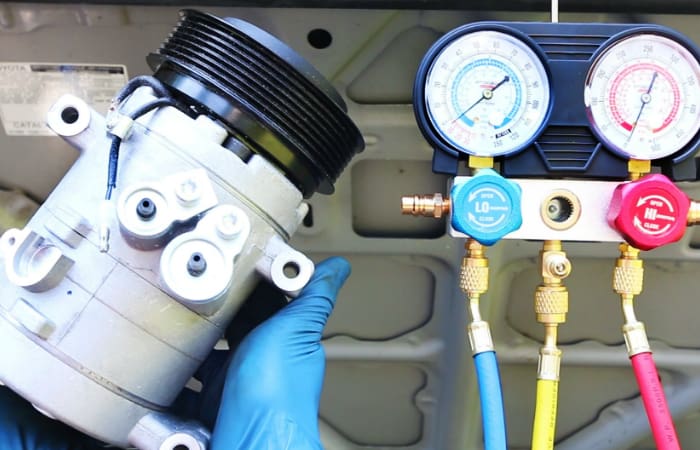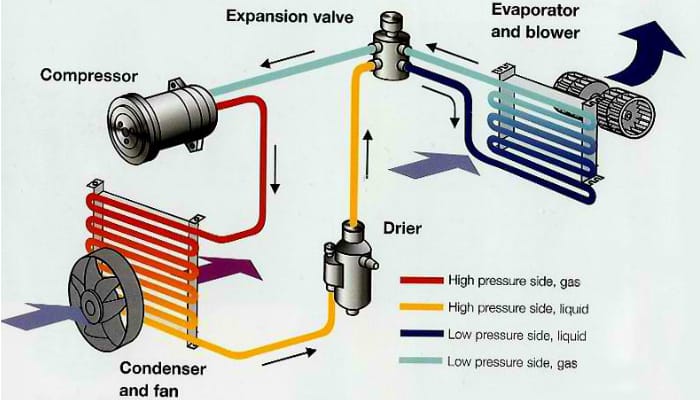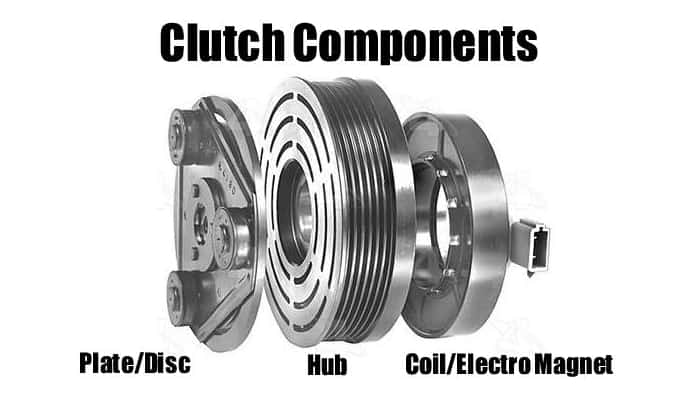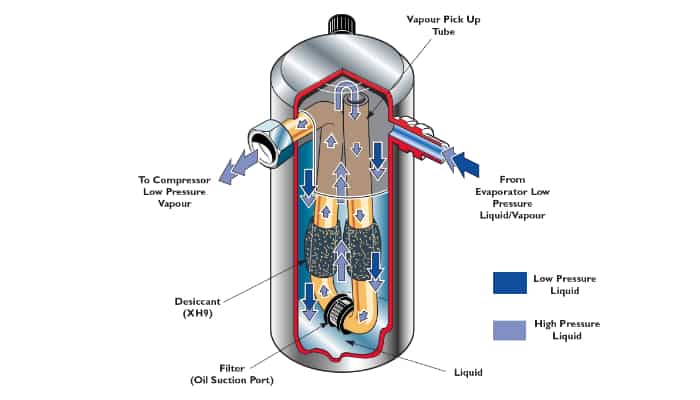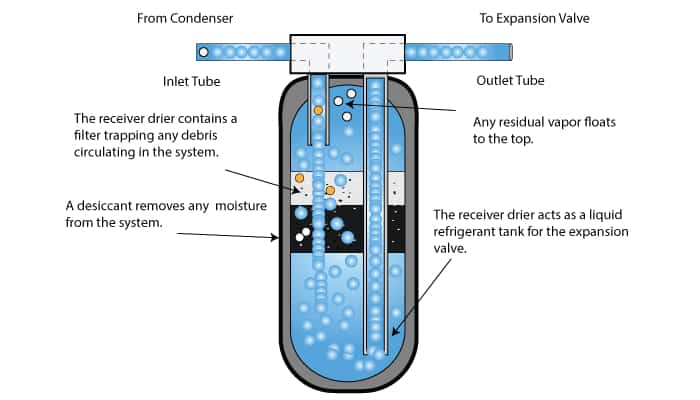Air conditioner compressors are lifesavers for drivers living in hot climates or only experiencing summer months in cold areas. To be honest, the idea of AC alone is already promising. However, there should be a special air compressor to make that notion into reality.
The invention of AC had nothing to do with automobiles. That’s why air compressors exist to make the standard AC system compatible with cars. Now that we have realized that there is more to air conditioners than just simply providing us with cool temperature, let’s find out the answers to this question: “What does an AC compressor do?”
How Important Is the Refrigerant?
Before anything else, it is a must to know first the function of refrigerant for the car’s AC system. Besides, refrigerant and air compressors go hand in hand.
The most straightforward way of explaining the purpose of refrigerant is that it is a type of fluid that turns hot air into cold air. Refrigerant’s importance as an automobile fluid is comparable to the likes of antifreeze and oil. Antifreeze is one of the factors that make it possible for people to use cars during cold weather or season. Meanwhile, oil is so essential for car movement that every vehicle must have a filter for it to ensure its maximum performance.
Refrigerant comes in two major forms: R-12 and R-134a. In the past, R-12 was the original type. However, in 1994, the United States banned the use of chlorofluorocarbon fluids after it was proven that CFM has bad effects to the ozone layer. Unfortunately, R-12 was filled with CFM.
After years of research and experimentation, R-134a is now the safer alternative compared to R-12. It still has chemicals, but at least it does not have a strong environmental impact unlike the latter.
What Are the Parts of the AC System?
To better understand the functions of an AC compressor, learn the components of the whole system first.
Condenser
This component produces cold fluid by converting the properties of the hot gas. It is usually located before the radiator. From the air compressor, hot gas is radiated by the condenser. Then, the condenser continues depressurizing, cooling, and liquefying it for the dryer.

Evaporator
The one responsible for cooling the air and making it free from moisture is the evaporator. As soon as you turn on the AC, the evaporator makes sure that you will feel cool in just a matter of seconds. It is actually the final component before cool air finally reaches the passenger compartment. It is strategically located behind the dashboard. At the same time, it must absorb heat from the passenger area to completely give way to low temperatures.
Clutches
Once the button is pressed to turn on the AC, a clutch activates the air compressor through electromagnetism. It aims to pressurize the refrigerant to make it pass the condenser until it reaches the evaporator. Then, a cycling clutch switch regulates or gauges the temperature inside the evaporator to keep the component from completely freezing.

Expansion Valve
There must be something that divides the evaporator and condenser. Good thing the AC system has an orifice tube or expansion valve. Starting from the condenser, the expansion valve gauges the pressure and heat. Meanwhile, for the sake of the evaporator, it controls the pressure of refrigerant.
The orifice tube, even though it is similar to the expansion valve, has an extra responsibility. It also helps to separate the impurities away from the AC system’s parts.
Accumulator
More about orifice tubes, what these components need is an accumulator, not a dryer. The accumulator removes moisture and dirt from the air that goes throughout the entire AC system. It also controls the refrigerant that enters the evaporator. This is important since too much refrigerant is bad for the air compressor.

Dryer
While accumulators are for orifice tubes, receivers or dryers work with expansion valves. They focus on keeping the air compressor clean from moisture, dirt, and other harmful substances.
We mentioned before that the evaporator absorbs heat from the passenger compartment. To avoid putting the AC system at risk because of the area’s damaging airborne elements, the dryer collects all impurities – solid or liquid – from the filtered gas.

Filtering air is essential to prevent water from entering the air compressor. Also, it stops moisture from combining with refrigerant. When moisture and refrigerant mix together, they release acidic pollutants around the system.
Compressor
Finally, we are going to discuss the AC compressor’s function in a nutshell. Basically, without a compressor, the whole system will never produce cool air. The system would still be able to absorb the passenger compartment’s atmospheric air, but that’s it. There would be no cycle, throwing the idea of a system.
As a warm-up for the detailed explanation of what does an AC compressor do, the main purpose of this component is to put pressure on the refrigerant and change the temperature when activated.
What Does an AC Compressor Do?
An air compressor is a trigger to start the AC system and an overseer to keep the cycle going. For more depth, let’s go over the whole system again to give you a clearer picture of what an AC compressor does.
The first thing you activate as soon as you press the AC button is the air compressor. To start the system, the compressor controls the temperature and pressure of the refrigerant. Then, the refrigerant passes the condenser to cool down. Next, it enters the dryer for the elimination of impurities. When it is finally filtered, the expansion valve lowers its pressure.
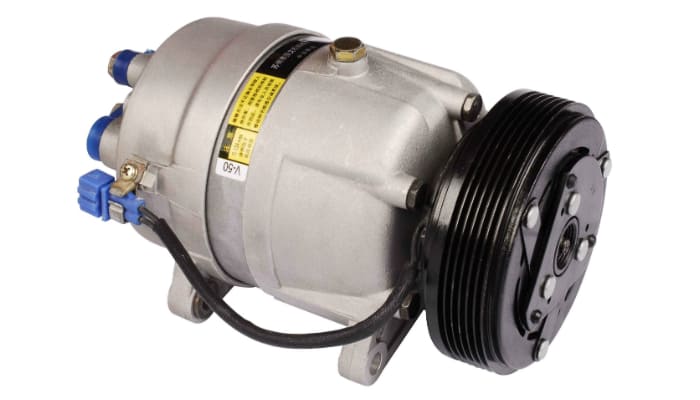
At last, the refrigerant enters the evaporator, extremely cold and completely free from moisture. It is the reason why the blower can pump out cool air all over the passenger compartment.
What Should We Know About AC Compressor Maintenance?
You would know if everything is okay in your car’s AC system if the passenger compartment is already cold within the first few minutes of activation, regardless of how hot it is outside. On the other hand, it is obvious that something is wrong if it takes too long for the car to get cold.
In fixing the AC, the two options are recharge and replacement, depending on the level of malfunction. We do not recommend DIY fixing and maintenance unless you are a pro. The AC system’s circuitry is too complicated which has a lot to do with the compressor’s function of pressurizing the refrigerant. Only expert technicians can solve vehicle-related AC problems.
Summary
To refresh our memory about the answers to the question “What does an AC compressor do,” the keyword is the refrigerant. Even though refrigerant is the common denominator of all components of the system, the air compressor is the reason why this fluid is able to pass through each section while undergoing pressure and temperature changes. It is the reason why everything in the system works together.
To know more about lesser known car parts, find out the main functions of bushings, brake calipers, and ball joints.

